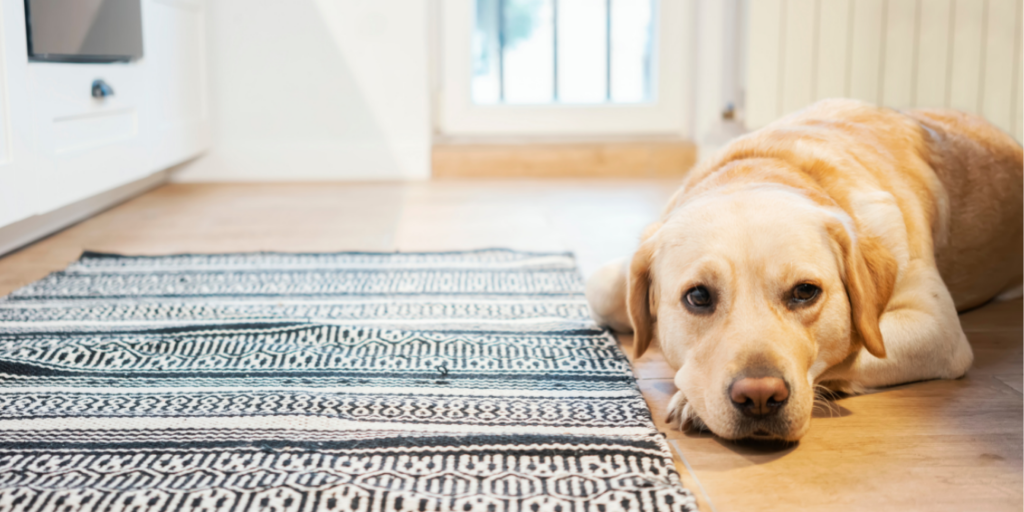Leaving your dog at home definitely isn’t an easy thing to do. Whether they’re a puppy or an older dog, being away from your companion is hard, especially when they rely on you. It’s important to keep them happy and healthy, so here are a few tips if you have to step out of the house for work or running errands.
Even the best-adjusted dogs can become distressed if they’re left alone for too long. As a puppy, they’re prone to separation anxiety and accidents if left alone, so try to keep it under two hours. For adult dogs, it’s okay for them to be alone between four and six hours, as they’re better adjusted and sleep while you’re not home. If your older pup has health issues, it’s best to only stay out for two to six hours, depending on their needs.
Understanding how your dog behaves while alone can be difficult because we can’t see what they’re doing and how their temperament is (unless you have a fancy doggy camera). Consider their age, health conditions, training, feeding schedule, exercise and activity, socialization, and whether or not you have other animals at home before stepping out of your house. Before you leave for a couple of hours, try this: step out for just 30 minutes and see how they react once you return. This can help show you any signs of distress that may have occurred while you were gone.
Some dogs are better behaved than others, so they may be able to handle being alone for long periods of time. There are common signs of distress to look for if your dog can’t handle being alone:
- Scratching
- Biting
- Howling or whining
- Binge eating
- Chewing on furniture and clothes
Luckily, furniture and clothes can be replaced, but if your dog escapes your home, things can become more serious. They may not be able to return home if they get lost or roam too far away, and then there’s the issue regarding pedestrians and vehicles on the road. You don’t want someone to grab your dog thinking it may be a stray and turning them to a shelter, or worse the pound.
Similarly with vehicles, drivers can become distracted, and depending on the size of your dog, they may not see them on the road. We suggest putting some sort of GPS Tracker on your dog if you plan on leaving your house and they have access to your backyard or in case of emergencies. Thankfully, we have some insurance coverage plans that can help protect your home in case anything happens which you can view here.
Additionally, some things to consider before leaving home are to tire out your dog with exercise and to avoid giving them access to your entire house. When tiring them out, make sure they get exercise before you leave so they can spend most of the time you’re not home asleep. Plus, walking is beneficial for both you and your dog, so get out around the neighborhood or visit some dog-friendly trails! Similarly, restricting your dog to only a certain area of your home, preferably one they’re most comfortable in, can help them be a little more relaxed. Once they’re better acclimated to being on their own, you can open up their roaming area after you know they haven’t shown any major signs of distress.
Proper training is also a critical part of making sure your dog is well behaved while you’re gone. Dog experts call this method of training the “Leave and Return” scenario:
- Start by walking to your front door or wherever you would usually exit your home and put your shoes on. If you see your dog reacting negatively, try to ignore it so they become used to you leaving. This should be repeated at least three times a day.
- When you return home, avoid greeting your dog immediately. Walk-in, put your keys and whatever belongings you have down, take your shoes off, whatever feels comfortable. Then go ahead and greet them. This will signal to them that returning home is not something to be celebrated, but just everyday life.
- One last tip to try is when you come home, command your dog to go to their bed. Once they return and have settled down, this is when you can approach them calmly and greet them.
The last thing to address is what you should do when you return home and how to treat your dog. Of course, your dog missed you just as much as you missed them, so it’s important to be affectionate and spend time with them. Some suggestions include taking them out for a walk, going to the dog park, or playing with some of their favorite toys. They will greatly appreciate the interaction after not having seen you for many hours.
Looking for some more tips? Check out this great video by Chewy: https://www.youtube.com/watch?v=cd9cmyMBcg8&t=1s


Recent Comments